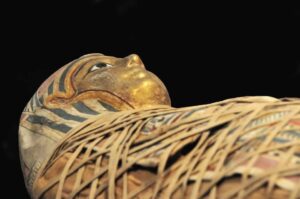
Arkeonews reports that Chinese and Uzbek archaeologists have discovered an ancient settlement dating back to the 8th century BC in Uzbekistan, near the Surkhandarya River.
According to the newspaper, a group of Uzbek and Chinese archaeologists made three major discoveries between April and June.
While thefirst discovery relates to a settlement dating back to the 8th century BC, where a square-shaped architectural structure with several rooms, including a kiln and garbage pits, was found, offering insight into the ancient civilization that once flourished there, another major project involved the study of theancient Kushan Empire.
As a result of the joint efforts, twenty-five ancient tombs and six structures of the Kushan Empire were found. The KushanEmpire was a powerful political system that ruled the territory of modern Uzbekistan, Afghanistan, and Pakistan. It was founded in the first century AD by the nomadic Yuezhi people.
Archaeologist Wang Meng noted that such findings are crucial for establishing the chronology of the Kushan culture in the region, helping to trace the development of civilization around the Surkhandarya region.
In the third project, the archaeologists focused on theFerghana Valley in eastern Uzbekistan, where they explored and studied 84 ruins between April and May. The research also uncovered precious cave paintings that helped paint a picture of the ancient culture of Uzbekistan’s Namangan region.
These discoveries mark the latest milestones in a longstanding archaeological partnership between Northwestern University and Uzbekistan that began in 2009. Through 2024, more than 70 joint projects have been implemented in Central Asia to study historical exchanges along the ancient Silk Road.

Archaeologists in Egypt have found a mummy 4.3 thousand years old: in all likelihood, this is the oldest such find ever made in this country and preserved in such good condition.
The mummy was found near the oldest Egyptian pyramid of Djoser (the village of Saqqara, 25 km south of Egypt) at the bottom of a 15-meter deep mine. The head of the archaeological team, former Egyptian antiquities minister Zahi Hawass, told reporters that burials dating back to the V (ca. 2504 to 2347 B.C.) and VI (ca. 2347 to 2216 B.C.) dynasties of ancient Egypt were found here.
“This mummy may be the oldest and most preserved found in Egypt to this day,” he stressed.
The mummy of a man named Hecashepes was placed in a limestone sarcophagus and sealed the lid with mortar.
Another tomb belonged to Khnumdjedef (Khnumdjedef in English), a priest, an “inspector” who supervised officials and aristocrats, and who served under the last pharaoh of the fifth dynasty, Unis (c. 2367 – 2347 BC). His tomb was decorated with scenes of daily life of those long ago times. Another tomb was the resting place of Meri, “keeper of secrets and assistant to the great lord of the palace. Numerous statuettes were also found in the underground crypt.